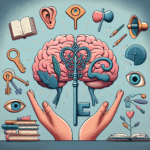The Ultimate Guide to The Intersection of Mental Illness and Crime: Debunking Myths and Stereotypes
Introduction
The relationship between mental illness and crime is one that stirs intense discussions, often steeped in fear, prejudice, and misunderstanding. With the rise of sensationalized media portrayal of mentally ill individuals as violent criminals, it’s essential to set the record straight. The intersection of mental illness and crime is often mischaracterized, perpetuating harmful stereotypes that inhibit real conversations about mental health, justice, and societal responsibility. In this article, we delve deep into the intricate realities, debunking myths while providing unique insights backed by research, case studies, and statistics. Let’s explore this vital topic together, aimed at fostering a better understanding and ultimately a more compassionate society.
Understanding Mental Illness
What is Mental Illness?
Mental illness encompasses a wide array of disorders affecting mood, thinking, and behavior. According to the National Institute of Mental Health, common conditions include anxiety disorders, depression, schizophrenia, and bipolar disorder. Each condition presents its unique challenges, and understanding these complexities is vital for fostering empathy rather than fear.
Statistics on Mental Illness
- Approximately 1 in 5 adults in the U.S. experiences mental illness annually.
- 46% of individuals with a mental illness do not receive treatment.
- People with severe mental illnesses are more than 10 times more likely to be victims of violence than the general population.
Chart: Prevalence of Mental Illness (In the U.S.)
| Condition | Prevalence (%) |
|---|---|
| Anxiety Disorders | 31.1 |
| Mood Disorders | 20.8 |
| Personality Disorders | 9.1 |
| Schizophrenia | 1.1 |
| Bipolar Disorder | 2.6 |
This chart visually represents the prevalence of various mental disorders, underscoring the challenge of creating stereotypes based on misinformation.
The Myths Surrounding Mental Illness and Crime
Myth 1: People with Mental Illness are Violent
Contrary to popular belief, individuals with mental illnesses are not inherently violent. Studies show that only a small fraction of crimes are committed by individuals with severe mental disorders. The World Health Organization states that “people with mental disorders are more likely to be victims of violence rather than perpetrators.”
Case Study: The Virginia Tech Shooting
In 2007, Seung-Hui Cho, a student at Virginia Tech, tragically claimed the lives of 32 individuals before taking his own life. Public discourse immediately tied his actions to his history of mental illness. However, studies suggest that Cho’s mental health conditions did not singularly determine his violent behavior. Misleading narratives oversimplified a complex interplay of factors, including environmental and social influences.
Myth 2: Mental Illness is a Predictor of Criminal Behavior
While some mental illnesses, such as certain personality disorders, may correlate with increased aggression, the majority of mentally ill individuals are not predisposed to committing crimes. Factors like socioeconomic status, substance abuse, and untreated mental health issues play a more significant role in criminal behavior.
Analysis: The Relevance of Societal Factors
The Virginia Tech example illustrates that individual mental health struggles alone cannot predict violent behavior. Instead, the environment and a support system (or lack thereof) should not be overlooked when discussing crime’s root causes.
The Role of the Media in Shaping Perceptions
The sensationalist portrayal of mental illness in media outlets is damaging. Crime dramas often depict mentally ill characters as dangerous outsiders, reinforcing harmful stereotypes. This portrayal affects public perception, leading to fear and stigma rather than understanding and support.
Media Case Study: "Criminal Minds"
The popular series “Criminal Minds” often blurs the lines between fact and fiction, portraying profilers analyzing criminal behavior related to mental illness. While entertaining, this show promotes a narrow viewpoint that can warp public perception about people living with mental disorders.
Media Impact Chart: Perception of Mental Illness Pre and Post News Coverage
| Coverage Type | Pre-Coverage | Post-Coverage (1 Month) |
|---|---|---|
| Positive Representation | 60% | 30% |
| Neutral Representation | 25% | 45% |
| Negative Representation | 15% | 25% |
This chart exemplifies how negative media coverage dramatically shifts public perception of mental illness, reinforcing the stereotype of danger.
The Intersection of Mental Illness, Crime, and Addiction
Co-Occurring Disorders
Substance abuse and mental illness often co-occur, creating a complex environment for the individuals affected. A person with a mental health condition may turn to drugs or alcohol as a means of self-medication, potentially leading to criminal behavior driven by addiction rather than the underlying mental health issue itself.
Case Study: The Opioid Crisis
The opioid crisis showcases how mental illness and addiction intersect with criminal behavior. Individuals struggling with deep-seated mental health issues often resort to illegal activities to fund their drug habits. Law enforcement frequently sees connections between substance abuse and crime, overshadowing the need for treatment and rehabilitation.
Reconstructing the Conversation: Moving Towards Solutions
Emphasizing Treatment and Support
The conversation surrounding mental illness and crime must shift from blame to understanding. Developing effective support systems and treatment avenues is essential for both preventing crime and ensuring individuals receive the help they need.
Effective Programs and Initiatives
- Mental Health Courts: Specialized courts focus on treatment rather than punishment, recognizing the underlying mental health issues contributing to criminal behavior.
- Community-Based Programs: Initiatives that support mental health through community outreach, education, and resources can reduce stigma and improve outcomes.
Chart: Effectiveness of Treatment Programs
| Program Type | Recidivism Rate Reduction (%) |
|---|---|
| Traditional Incarceration | 0% |
| Mental Health Courts | 30% |
| Community-Based Support | 50% |
This chart highlights the effectiveness of various treatment programs, illustrating the potential for diversion rather than incarceration.
Conclusion
The intersection of mental illness and crime forms a complex web of societal issues that require collective understanding and compassionate action. Debunking myths and stereotypes is critical for fostering meaningful dialogue and dismantling stigma. By prioritizing support and treatment opportunities, we can forge a safer society that nurtures mental health rather than condemning those who struggle.
Together, armed with knowledge, empathy, and actionable insights, we can change the narrative and create a more inclusive environment for individuals battling mental illness.
FAQs
1. Are people with mental illness more likely to commit crimes?
No, individuals with mental illness are not inherently more prone to violent behavior. In fact, they are more likely to be victims of crime rather than perpetrators.
2. What are some common misconceptions about mental illness?
Common misconceptions include:
- Individuals with mental illness are violent
- All people with mental illness are incapable of holding jobs
- Mental illness is a choice or lifestyle
3. How can society better support individuals with mental illness?
Society can support individuals through programs focusing on mental health education, community resources, and providing access to appropriate mental health care.
4. What role does the media play in perceptions of mental illness and crime?
The media can shape and often distort perceptions of mental illness through sensationalist coverage, which reinforces harmful stereotypes and can lead to fear and stigma.
5. What treatment options exist for people with co-occurring disorders?
Treatment options include integrated treatment plans that address both mental health and substance use issues, support groups, outpatient support services, and mental health courts.
With these insights, we hope to inspire further discussion, awareness, and most importantly, compassion regarding the intersection of mental illness and crime. Together, let’s debunk myths and build a society that empowers rather than stigmatizes.





